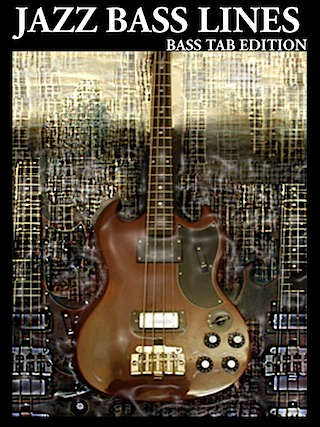
Watch Blues bass video lesson from the book
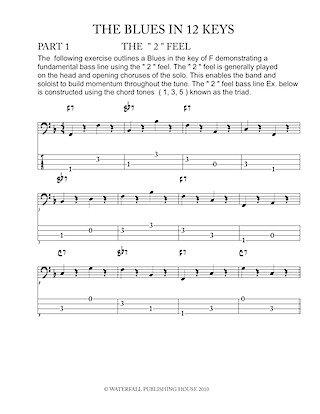
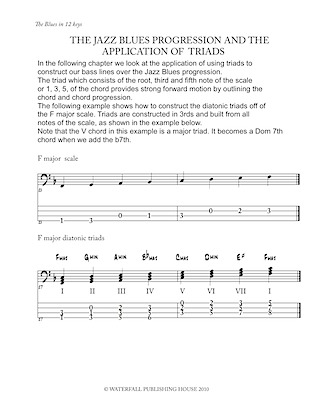
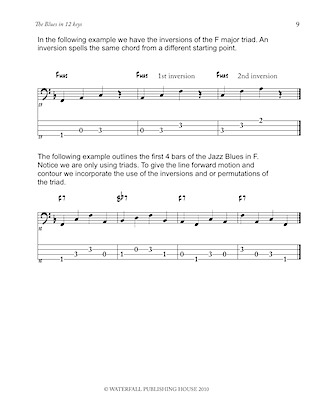
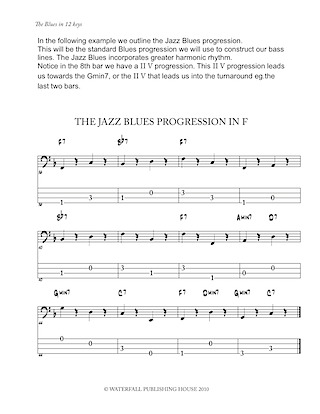
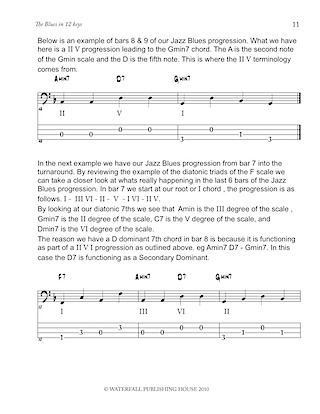
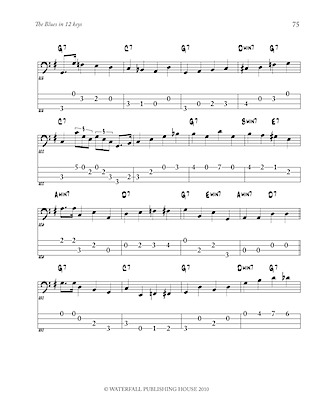
CONSTRUCTING WALKING JAZZ BASS LINES Book I WALKING BASS LINES : THE BLUES IN 12 KEYS ELECTRIC BASS EDITION
174 pages of Walking bass guitar tab.
The Blues in 12 Keys , Book I in the Constructing Walking Jazz Bass Lines series is designed to give the aspiring bassist of all levels the tools and devices required to construct professional level jazz bass lines and to build a strong functional awareness of how to function as a professional bassist in any musical setting.
The information builds in a stepwise progression enabling the beginning to advanced bassist to gather the necessary tools required to find their own voice as a bassist.
The Blues in 12 keys has many advanced concepts and techniques built into the lesson material, enabling the bassist to develop their own language and take their playing to the next level. Suitable for bassists of all styles beginner to advanced level.
|
||||||||||||||||||||||||||||||||||||||||||||||||
Customer Reviews For the Bass clef edition.
An invaluable resource to the aspiring jazz bassist,
By
Midwest Book Review (Oregon, WI USA) - See all my reviews
This review is from: Constructing Walking Jazz Bass Lines, Book 1: Walking Bass Lines- The Blues in 12 Keys Upright Bass and Electric Bass Method (Paperback)
"Constructing Walking Jazz Bass Lines, Book 1, The Blues in 12 Keys: A Comprehensive Guide To Constructing Walking Jazz Bass Lines for the Double Bassist and Electric Jazz Bassist" is a complete 12-key guide to techniques and devices used to construct walking jazz bass lines in the jazz tradition. Part I, the Blues in F, presents exercises and techniques known to help create robust jazz bass lines, moving forward while retaining a solid rhythmic, harmonic foundation. Part 2, The Blues in 12 Keys, expands further the lessons of Part 1, providing previous techniques and devices used in professional level bass lines in all 12 keys. The practical and ambitious aim of "Constructing Walking Jazz Bass Lines" is "to give the aspiring bassist a solid grounding in understanding how to construct walking Jazz Bass lines and support a melody and or soloist (p. 97)." The Book concludes with sage advice, "Listen to as much music as you can, Listen to the masters (p.97)." Included is full notations with enharmonic chord symbols for more than 150 choruses of jazz blues lines in all 12 keys, using the whole register of the instrument. "Constructing Walking Jazz Bass Lines Book 1" is an invaluable resource to the aspiring jazz bassist, with potential for learning teaching and great practical application.
|
Book I in the " Constructing Walking Jazz Bass Lines " series covering the " MUST KNOW " chord changes for the jazz bassist.
The Jazz Blues progression is an essential part of the Jazz Bassist vocabulary and was practiced in all 12 keys along with " Rhythm Changes " by the Be Bop players.
The Blues in 12 Keys is a complete guide demonstrating the devices used to construct walking bass lines in the jazz tradition. The book starts out in Part 1 by demonstrating the various techniques used to provide forward motion into the bass lines, while providing
a strong harmonic and rhythmic foundation.
The exercises are designed to give the electric bassist strong jazz bass lines in the bottom register of the instrument. As an added bonus for the electric bassist Part 1 provides a complete study of the blues in F whilst in the first position.
This is an excellent technique builder in itself.
Part 2 expands on the lessons and techniques used in Part 1 providing the student with the previous devices used in professional level bass lines in all 12 keys.
Included is over 150 choruses of jazz blues lines in all 12 keys using the whole register of the instrument.
There are many advanced principles applied in the following bass lines whilst never losing sight of the functioning principle of the bass in the jazz idiom.
To provide a strong foundation of rhythm and harmony for the music being played & providing support for the melody and or soloist. An additional area of interest for the electric bassist reading tab is the inclusion of the bass clef directly above the Bass Tab. This enables the bassist the option of applying their knowledge of tablature to the task of learning to read music.
PART 1 The Blues in F
The " 2 " feel ............................................................................
The Jazz blues progression and the use of triads ..........................
Embellishing the " 2 " feel ......................................................
The Dominant 7th chord ........................................................
Chromatic approach from below ............................................
Chromatic approach from above .............................................
Chromaticism and the walk up
and the walk down ..................................................................
Repeated notes and chromaticism ............................................
Harmonic Anticipation and playing across the bar line .................
Voice leading 7th chords .........................................................
Pedal points .............................................................................
Tri-Tone substitution ..............................................................
The Turnaround .......................................................................
PART 2
Blues in F ................................................................................
Blues in Gb .............................................................................
Blues in G ...............................................................................
Blues in Ab .........................................................................
Blues in A ...........................................................................
Blues in Bb .........................................................................
Blues in B ...........................................................................
Blues in C ...........................................................................
Blues in Db ........................................................................
Blues in D ...........................................................................
Blues in Eb .........................................................................
Blues in E ...........................................................................
In Conclusion ......................................................................


